This website uses cookies so that we can provide you with the best user experience possible. Cookie information is stored in your browser and performs functions such as recognising you when you return to our website and helping our team to understand which sections of the website you find most interesting and useful.
Nero d’Avola Zisola comes of age
Filippo Bartolotta explores Sicily most famous, but also the island’s most underestimated variety, Nero d’Avola, visiting the Mazzei Family’s estate in Zisola.
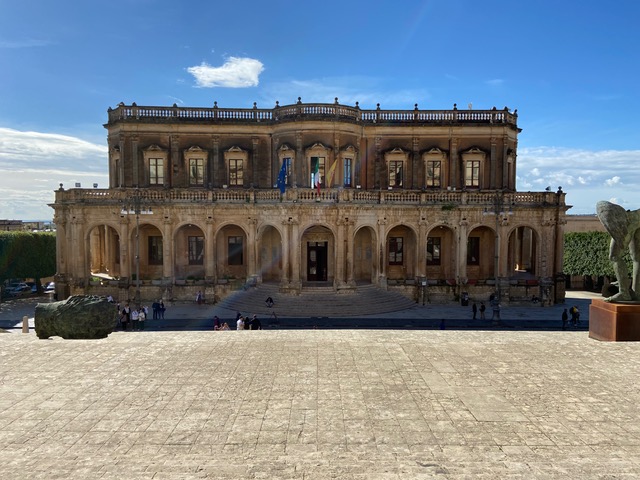
Upon landing in Catania last week I got the chance to enjoy the smoking Etna, the highest active volcano in Europe. I usually rent a car and drive there to check the trendy Nerello Mascalese reds and the mineral driven Carricante. This time though I wanted to check Sicily most famous and somehow underestimated variety: Nero d’Avola.
Known in Sicily since the end of the 1600s, Nero d’Avola was included in a group of Southern varieties called Calabrisi, probably sharing similar characteristics. The origin of the name seem to be originated from ancient Sicilian Calea, standing for grapes and Aulisi for Avola, therefore Calaulisi that is the grape of Avola. The home of this variety is in the south east of Sicily around the cities of Pachino, Vittoria and, of course, Avola.
The wines of this area came in help of the first phylloxera affected regions of France and northern Italy and by the end of the 1800 Nero d’Avola is spread out across the island. Today it is the main red grape with 16% of the total acreage. Given its ancient origin and the extension of the vineyard area, Nero d’Avola has a significant intra-varietal variability mainly affecting the morphological and compositional side of the grapes. Today there’s three biotypes:
- Biotype A, mainly present in central-southern Sicily. More alcoholic and bigger tannic structure.
- Biotype B, on western Sicily (the most widespread on the island). Riper fruit character, smoother and rounder.
- Biotype C on the South East (Avola, Vittoria, Pachino). Lighter in colour, with a crunchy and spicy style.
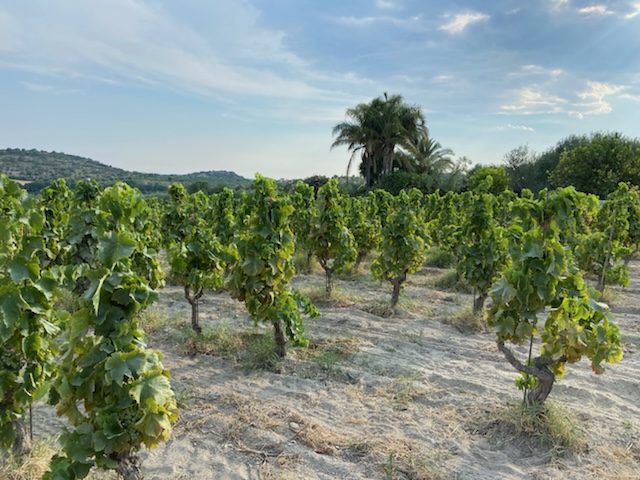
Nero d’Avola has been and still is the flagship variety of Sicily and it got famous in the late 90’s, early 2000’s for its jammy and sunny driven attitude. This made it famous but it also meant that serious wine lovers got sick of it pretty soon.
The commercial successes of this variety shadowed the more noble traits of Nero d’Avola which includes some pretty good anti global-warming characteristics:
- high tartaric acidity and low pH even with high sugar content
- an interesting interaction between biotypes and different environments which grants a terroir driven voice
- an good disposition for aging potential
In order to find out more about this I went to the home land of Nero d’Avola in South East Sicily for an exclusive vertical tasting for the drinks business of the Mazzei Family’s Zisola Estate located only a few miles away from Caffé Sicilia in Noto.
This is one of the greatest Sicilian Pasticceria where I believe I had the best almond Granita of my life and some luscious Cannoli by Pastry chef (and fine wine lover) Corrado Assenza. I saw him the first day I landed on the island and while tasting his new creation I asked him what he thought of Zisola (to check what the locals think of ‘foreign’ investors, like the Mazzei family, who are from Tuscany)
“A fine Nero d’Avola from traditional Alberello vines next to an authentic 15th century fortress baglio (a fortified country estate),” he replied.
I leave the sandstone light beige precious and surreal baroque UNESCO World Heritage Site city of Noto and head to Zisola, 5 km away.
There are many beautiful places in the world but few are those that are beautiful regardless of what they contain. Zisola is one of those places that exude beauty from every element that composes them: the white stones of the entrance portal of this splendid 15th century entrance, the mighty roots of the centuries-old trees that hug this sun-burnt land, the dry stone walls, built as not only as delimitation of the lemon gardens but a true expression of traditional Sicilian art.
In Zisola you won’t just see beautiful things, you can actually breathe beauty!
Following the driveway, between rows of vines, citrus and olive trees, we park the car in the shade of the gigantic centuries-old ficus and cross the entrance portal that leads inside the baglio (the fortified country estate or large farm that is an architectural emblem of Sicilian feudalism). It feels like diving into a chromatic different dimension: in front of us the central body of the ancient fortress in sandstone and terracotta, with splendid balconies with red and white frames overlooking the square, the heart of the baglio.
Right in the middle of the tiny square, Giusy, the cook, has placed a square table full of red cherry tomatoes and chillies drying under the summer heat wave. This is a a sign that our post vertical tasting lunch is gonna be delicious (food side note: Giusy Past alla Norma ranked 100/100!). The succession of stones, sculpted by the sun and water, is interrupted by cascades of pink bougainvillea, capers and purple plumbago.
We are welcomed by the small and lively Louis Roederer, a very sweet and peppery English pointer. Entering a baglio is entering the history of Sicily and Zisola does not betray the expectations. As we walk into the main hall the scent of baked eggplant, omelette with Giarra onions and vegetables from the garden is grabbing my senses for a while.
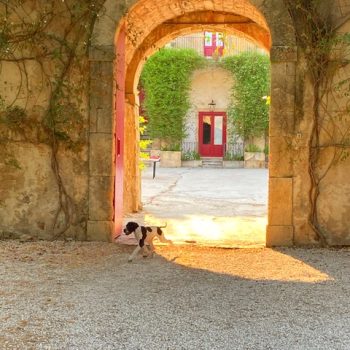
From a window of the first floor I can see the skyline of Noto which, despite being deep in the south of Sicily, feels like being at the centre of the world. Perhaps because it is the world that has passed through here over the centuries: a land of conquest for the Greeks, Phoenicians, Normans, Spaniards, French and British. Many have ploughed these lands but no one has managed to establish themselves on a land as difficult as it is unexpectedly fertile and generous. At each step a cloud of white dust is raised: the ground seems inconsistent and yet it is rich in active calcareous limestone and the despite the desert like white sand the beautiful bush trees are thriving.
Walking in the vineyard in the company of Gaetano Di Pino, passionate estate director, and the super committed young wine maker Francesco Loi, one immediately realises the uniqueness of this place where the vineyards grow in synergy with other typical Sicilian crops: grapefruits, oranges, lemons, mandarins, olives. At any point you stop, just turn around to realise this harmonious alternation between citrus vineyards and olive groves sometimes separated by passageways, sometimes by imposing rows of cypresses. Gaetano explains how the cypresses protect the orange blossom, the delicate citrus fruit, in the most difficult period of its growth when all crop can be ruined by the bursts of wind that insist on these hills close to the sea.
“It all started in 2003 with a 50 hectares property, today the 23 hectares of bush trained vines of Nero d’Avola is split in 29 parcels” says Gaetano.
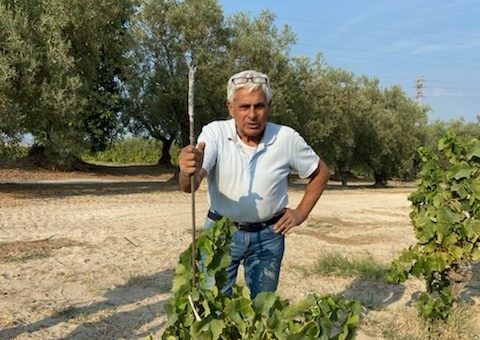
“The plants are now older and more balanced and we have been getting into a better relationship with them, for instance now we top them at veraison, bearing this way more consistent fruit.”
All work is carried out by hand by a team of local workers.
“We have grafted the Nero d’Avola with different rootstocks to help the plant adapting to the different soils. This is great but it also means different harvest times and a total amount of 500 work hours an hectare,” Gaetano concludes.
The grapes are harvested in late September in small crates, gently de-stemmed and fermented in still vats and then aged for ten months in barriques.
The Mazzei family, owners of famous Fonterutoli Estate in Chianti Classico strongly believe in this Sicilian project. When talking to Filippo Mazzei I had the feeling of someone who fell in love with this place from day one.
“I try to be in Zisola at least every two weeks following making sure I do not miss a bit of the life cycle of this striking nature of this estate. We are becoming more and more excited about this project every year,” he said.
Tasting notes
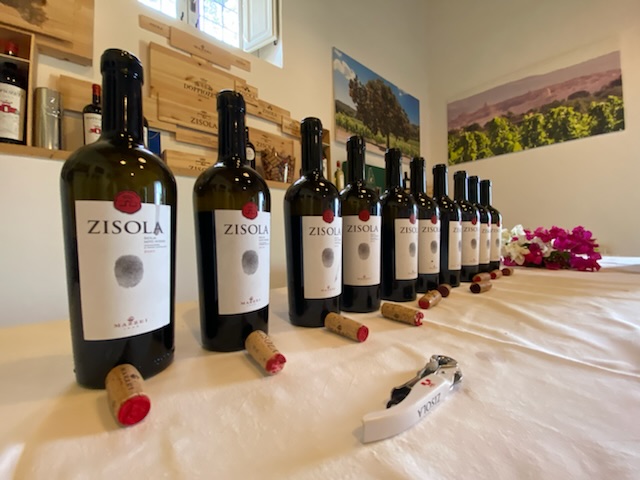
Before kicking off with the vertical tasting of Zisola Nero d’Avola from the very first vintage 2004 up to 2020 we tasted the Doppiozeta 2021 Cru Selections.
Doppiozeta was born in 2006 as a blend of Nero d’Avola, Syrah and Cabernet Franc (later only (Syrah) and as off 2014 Nero d’Avola 100%. Right now this top wine of the winery is a pure expression of the oldest vines of Nero d’Avola from three different parcels which we tasted the new about to be Doppiozeta 2021 en primeur and it feels like it is going to be a game-changer.
Doppiozeta 2021
1. Accanto piscina
(plot: 1.86ha located only 20 meters away from the press). The rockier parcel with hard stones already at five meters depth. The wines shows a stunning sweetness without any residual sugar and a savoury finish.
2. Clementine
(0.80 ha). A smooth, gentle and generous Nero d’Avola from a more fertile sea exposed vineyard. More extractive style with also a touch of more oak spices. Very deep colour, very intense finish.
3. Sopra Navel
(1 ha). This is the most balance sample with power and elegance and a great sapidity. The vineyard is on a pebble soil next to the river Gioi.
Zisola Nero d’Avola Vertical Tasting
1. Zisolasicilia IGT 2004 (first vintage)
2. Zisolasicilia IGT 2005
3. Zisolasicilia IGT 2007
From 2012 vintage the wine becomes a DOC
4. Zisola Silicia DOC Noto 2013
From 2014 the wines are fermented starting with a pied de cuve with indigenous yeasts
5. Zisola Silicia DOC Noto 2015
6. Zisola Silicia DOC Noto 2016
From the 2017 vintage Zizola Nero d’Avola goes ages only in tonneaux and 4th year barriques
7. Zisola Silicia DOC Noto 2018
Black cherries, with a lovely strawberry and pomegranate acidity and flavors. Some floral notes, not too deep, quite light and refreshing with some green edges showing the very rainy August. It looks like the wine would have some good aging potential but right now it seems a little less giving than the other vintages. Black cherry trees, super rainy August year. A week 92/100
8. Zisola Silicia DOC Noto 2019
Blueberries, ripe mulberries and some black cherries under spirit. A hot and spicy Nero d’Avola with some dry fruit, licorice and moka notes. A touch of austerity is balanced out by a generous and yet balanced alcoholic sweet finish and the typical prey note and orange blossom edge of these wonderful wines. 92/100
9. Zisola Silicia DOC Noto 2020
Sour cherries, tangerine peel, rosemary flowers, violets and natural vanilla. The palate is extremely vibrant with a very intense Nero d’Avola cherries and black pepper note and an almond paste perfume very pleasant presence. Juicy, simple and yet complex. 94/100
Related news
A 'challenging yet surprising' vintage for Centre-Loire in 2024

